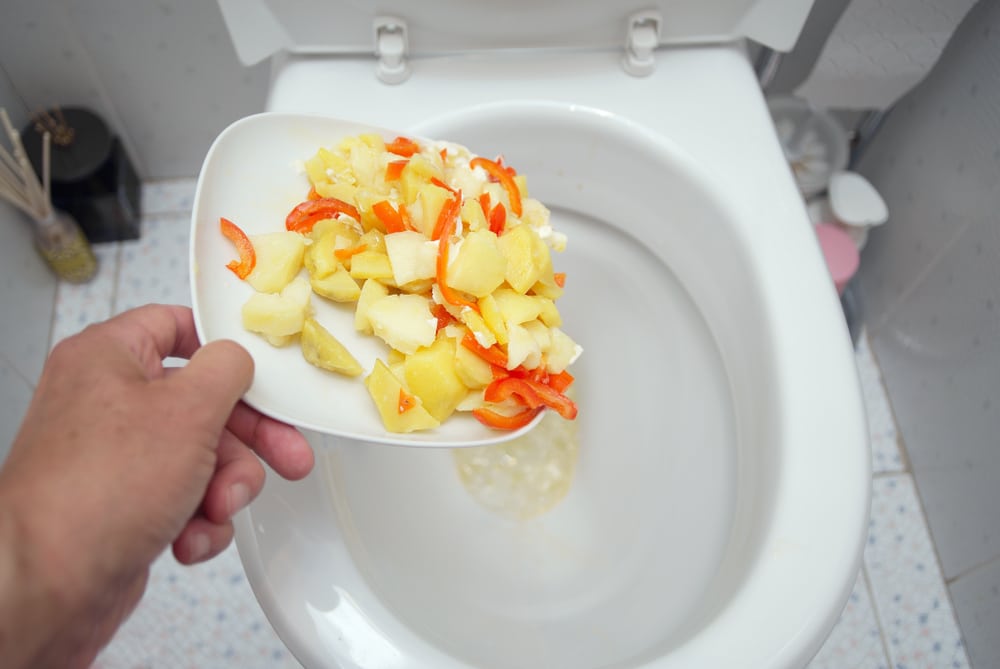Is it Common to Flush Food in the Toilet?
Is it Common to Flush Food in the Toilet?
Blog Article
They are making a number of great pointers regarding Flushing Food Down the Toilet? overall in this post on the next paragraphs.

Introduction
Many people are usually confronted with the dilemma of what to do with food waste, particularly when it concerns leftovers or scraps. One common concern that occurs is whether it's all right to flush food down the bathroom. In this short article, we'll look into the reasons people could consider flushing food, the effects of doing so, and alternate approaches for proper disposal.
Reasons people could consider flushing food
Lack of awareness
Some people might not be aware of the potential harm caused by purging food down the commode. They might incorrectly believe that it's a harmless technique.
Convenience
Purging food down the toilet may look like a quick and easy remedy to getting rid of undesirable scraps, specifically when there's no nearby trash can offered.
Negligence
Sometimes, people might simply pick to flush food out of large laziness, without considering the effects of their activities.
Effects of flushing food down the bathroom
Ecological impact
Food waste that winds up in rivers can contribute to pollution and damage marine ecosystems. Additionally, the water made use of to purge food can strain water resources.
Plumbing problems
Purging food can lead to clogged pipelines and drains, causing costly plumbing fixings and inconveniences.
Types of food that ought to not be flushed
Fibrous foods
Foods with fibrous appearances such as celery or corn husks can obtain tangled in pipelines and trigger blockages.
Starchy foods
Starchy foods like pasta and rice can take in water and swell, resulting in obstructions in pipes.
Oils and fats
Greasy foods like bacon or food preparation oils ought to never ever be flushed down the commode as they can strengthen and create blockages.
Appropriate disposal approaches for food waste
Using a waste disposal unit
For homes geared up with waste disposal unit, food scraps can be ground up and flushed via the plumbing system. However, not all foods appropriate for disposal in this manner.
Recycling
Particular food product packaging products can be recycled, lowering waste and reducing environmental impact.
Composting
Composting is an eco-friendly method to throw away food waste. Organic materials can be composted and made use of to enhance soil for gardening.
The value of appropriate waste management
Lowering environmental injury
Appropriate waste monitoring methods, such as composting and recycling, help reduce contamination and maintain natural resources for future generations.
Securing plumbing systems
By staying clear of the technique of flushing food down the toilet, homeowners can protect against expensive plumbing repair work and preserve the stability of their plumbing systems.
Final thought
Finally, while it may be tempting to flush food down the toilet for ease, it is necessary to understand the potential effects of this activity. By embracing appropriate waste administration techniques and taking care of food waste responsibly, individuals can contribute to healthier plumbing systems and a cleaner atmosphere for all.
FLUSH FOOD DOWN THE TOILET?
FLUSHING FOOD CAN CAUSE BLOCKED DRAINS IN YOUR HOME
All of the plumbing fixtures in your home are connected to the same sewer pipe outside of your home. This outdoor sewer pipe is responsible for transporting all the wastewater from your home to the Council sewer mains. Even small pieces of food that go down the kitchen sink can cause problems for your sewer. It should therefore be obvious that flushing larger bits of food, such as meat, risks a clog in either the toilet itself or the sewer pipes. Flushing greasy food is even more problematic because oil coagulates when it cools, coating the interior lining of your pipes.
THE TOILET IS NOT A BIN
Food isn’t the only thing that people shouldn’t be flushing down the toilet. People use the toilet to dispose of all kinds of things such as tampons, makeup wipes, dental floss, kitty litter and even underwear. Water goes to great lengths to educate residents about the high costs and stress placed on wastewater treatment systems simply from people flushing the wrong stuff down the toilet. It costs taxpayers millions of dollars each year, and homeowners thousands in blocked drain repairs.
FLUSHING FOOD IS A WASTE OF WATER
Flushing food is a waste of our most precious resource - water. In June this year Level 1 water restrictions were introduced to protect water supply from drought conditions. Much of New South Wales continues to be affected by prolonged drought with recent figures revealing up to 97 per cent of the state remains in drought. Depending on whether you have a single or dual flush toilet, every single flush uses between five and 11 litres of water. In the current climate this is a huge amount of water to be wasting on flushing food that should be placed in the bin (or better yet, the compost).
https://www.jabplumbingsolutions.com.au/blog/can-you-flush-food-down-the-toilet

I was shown that write-up about through a friend on our other web property. Enjoyed reading our article? Please quickly share it. Let other people check it out. We cherish reading our article about .
Details Here Report this page